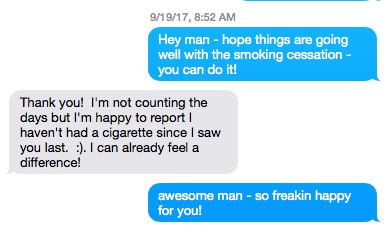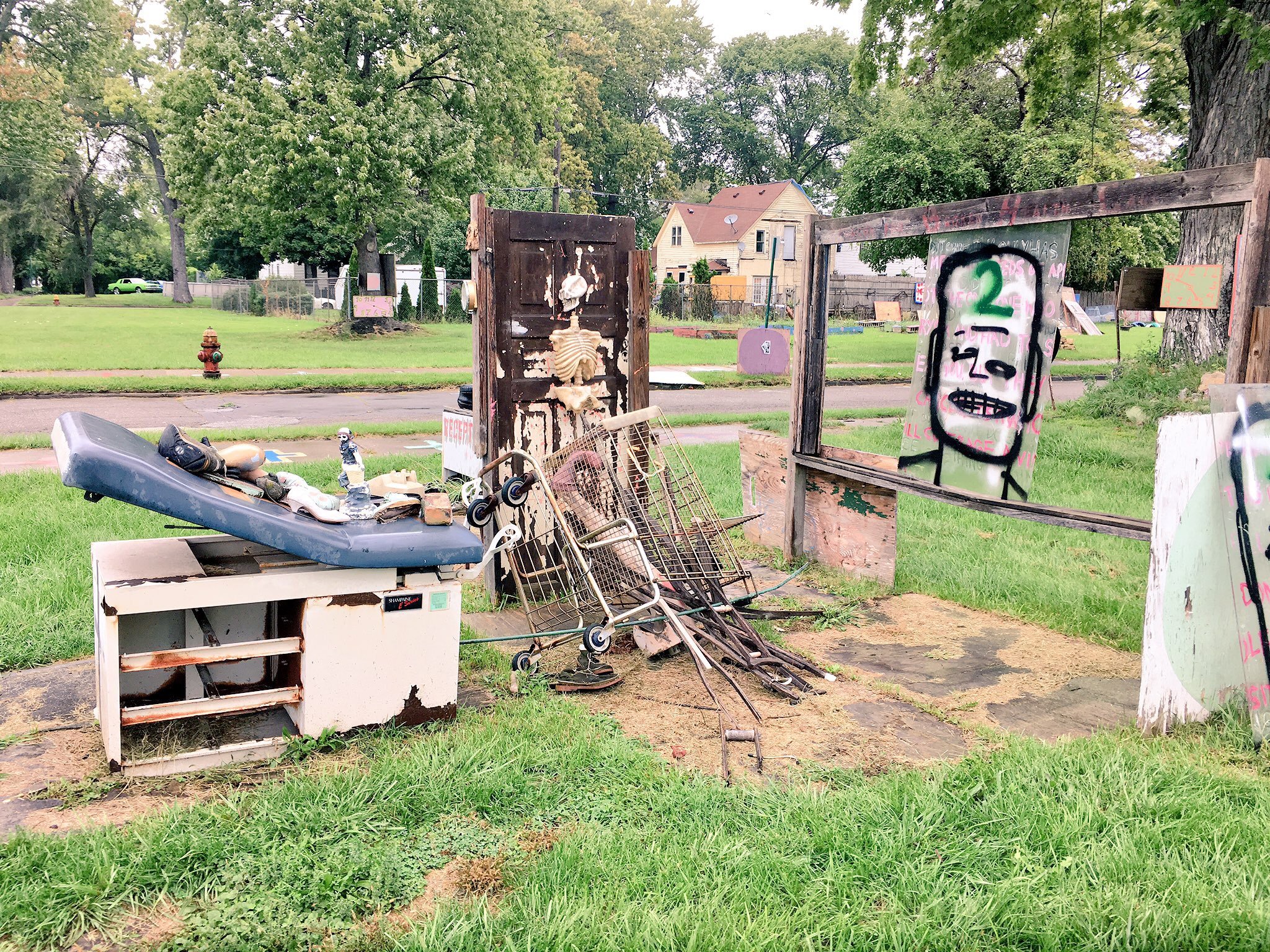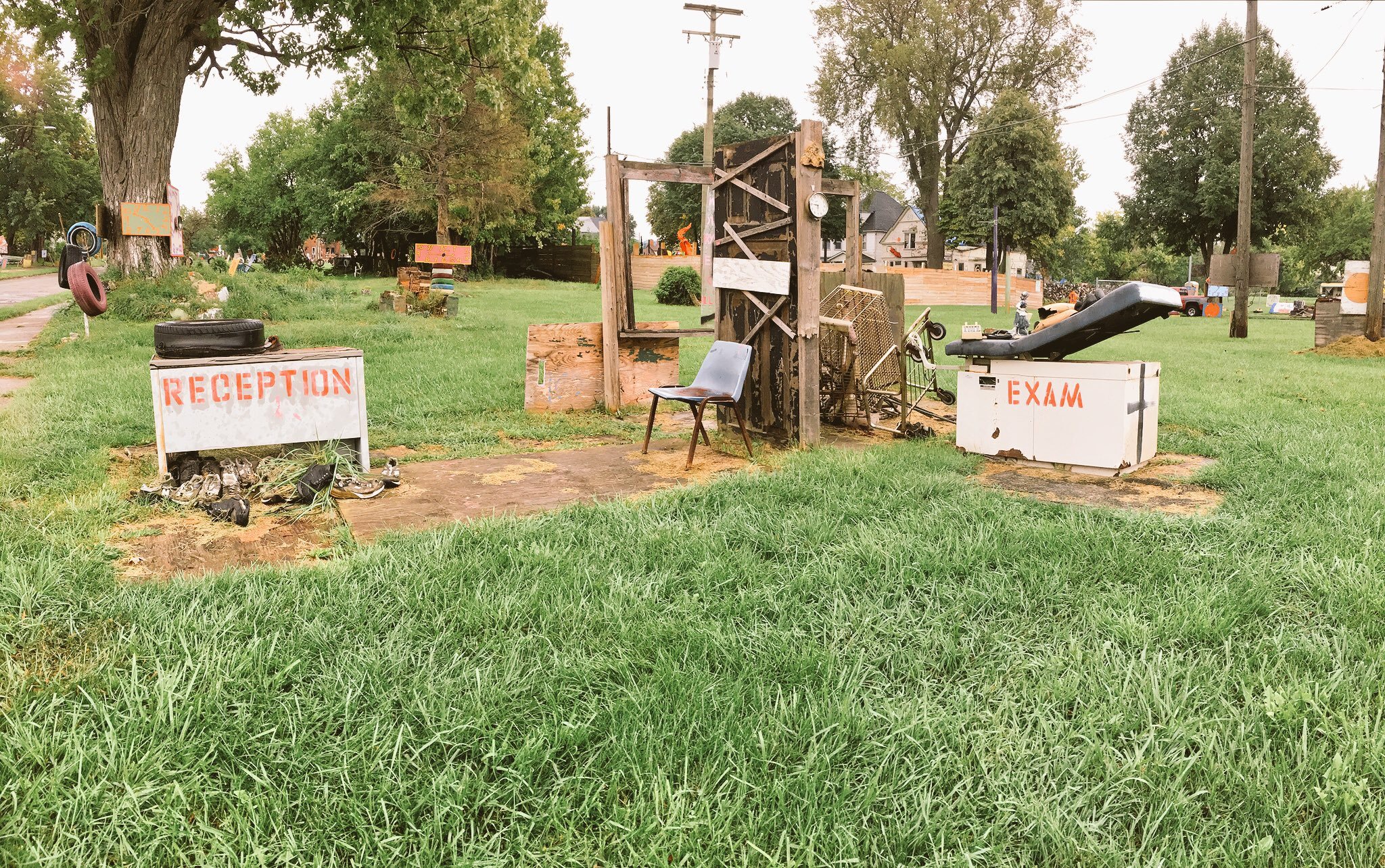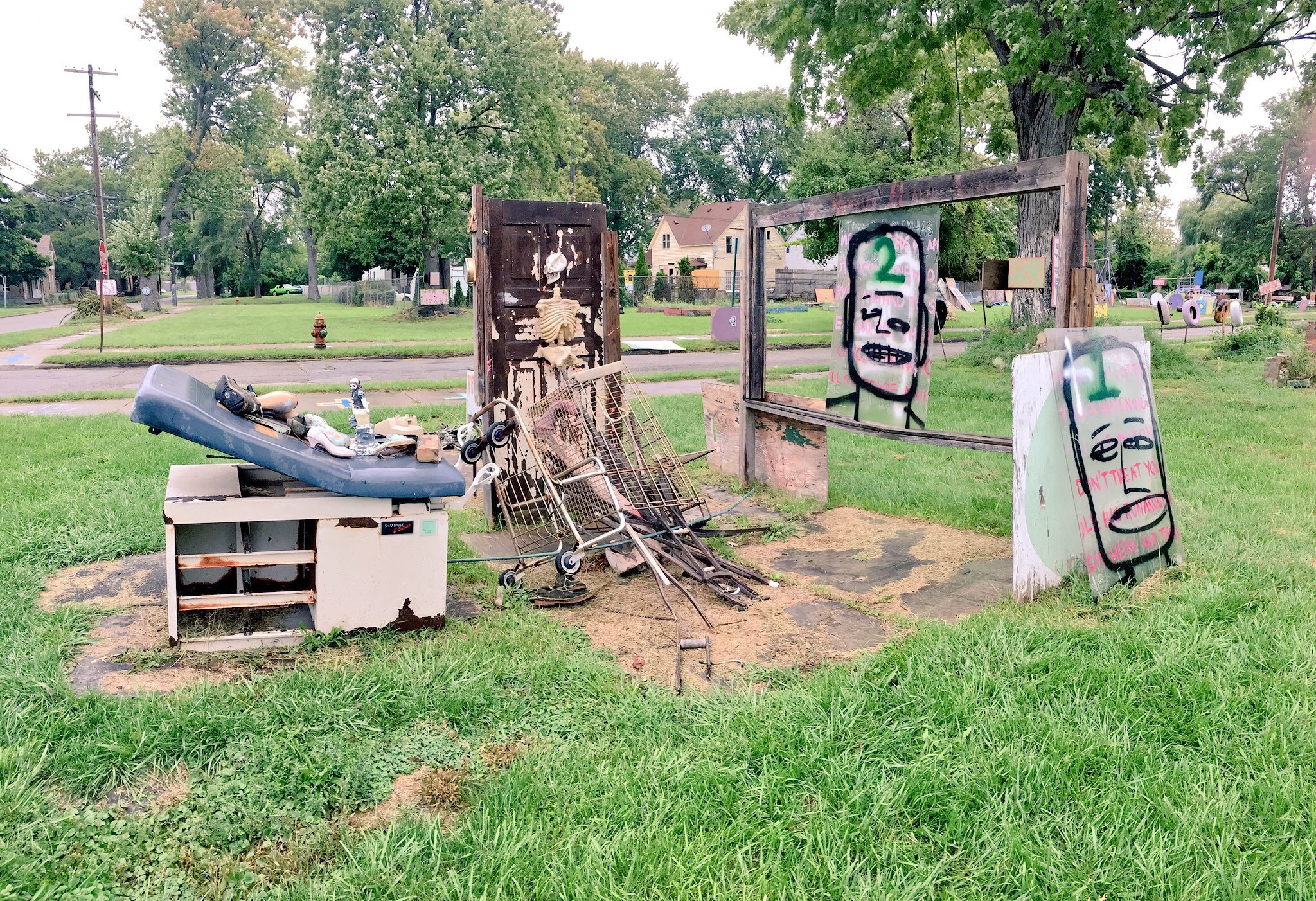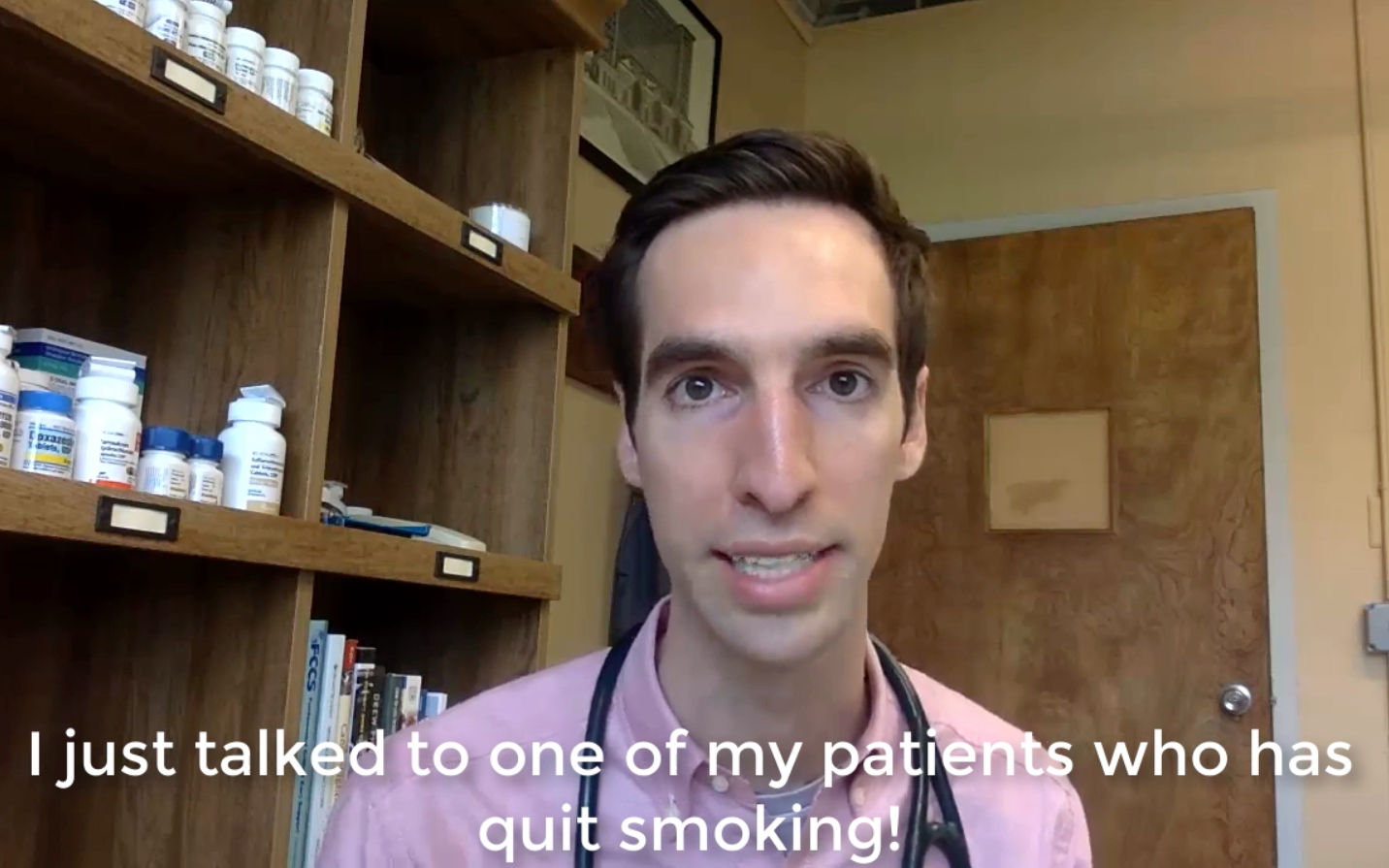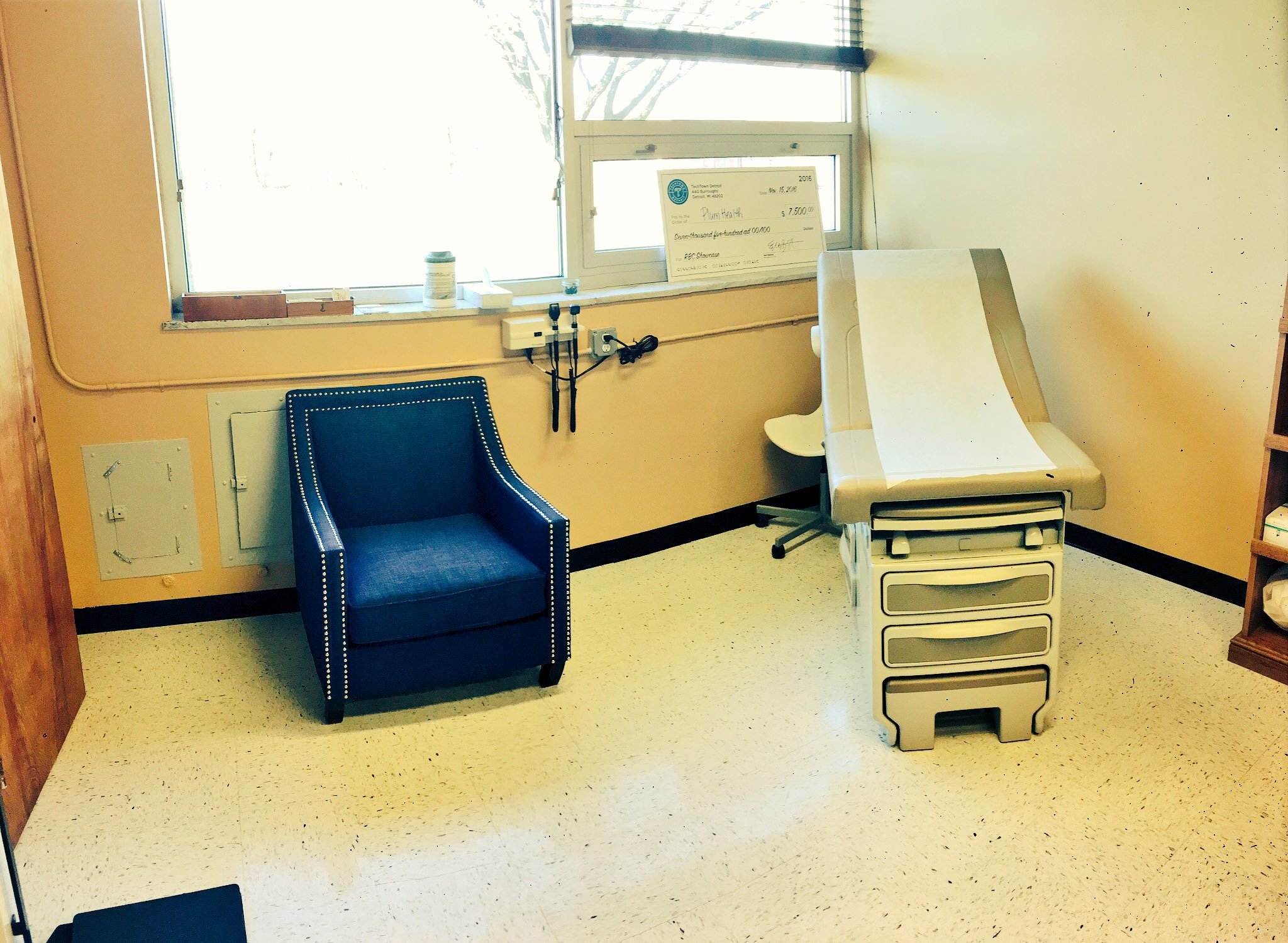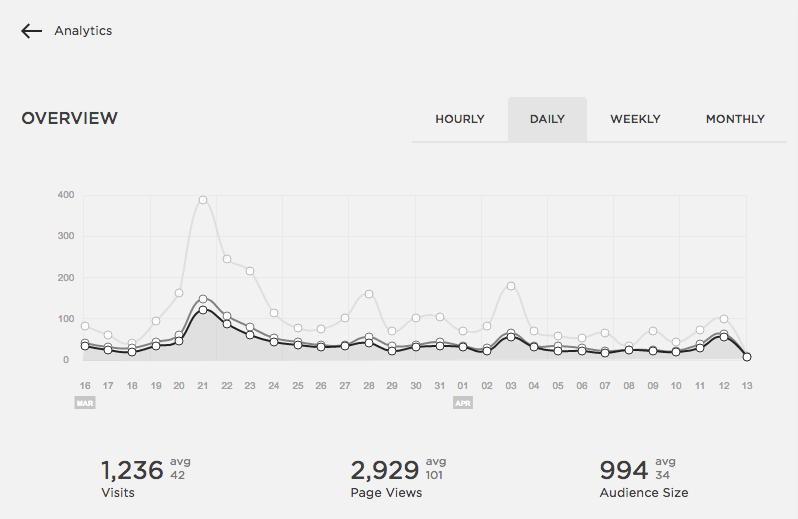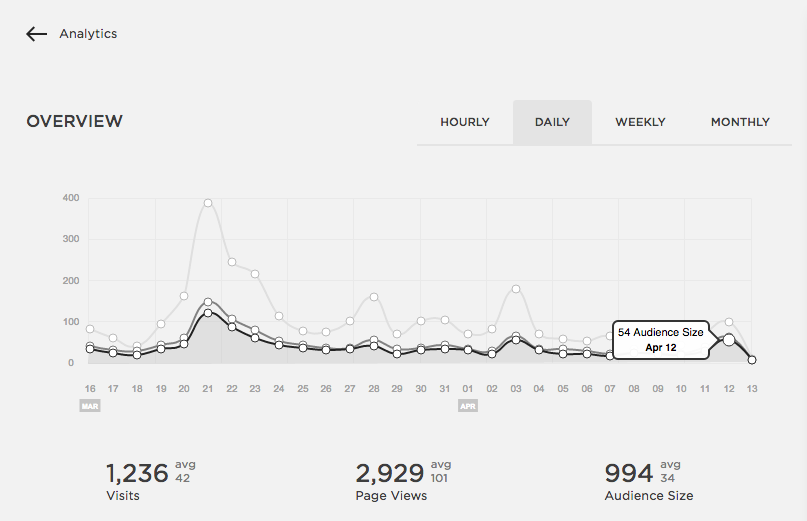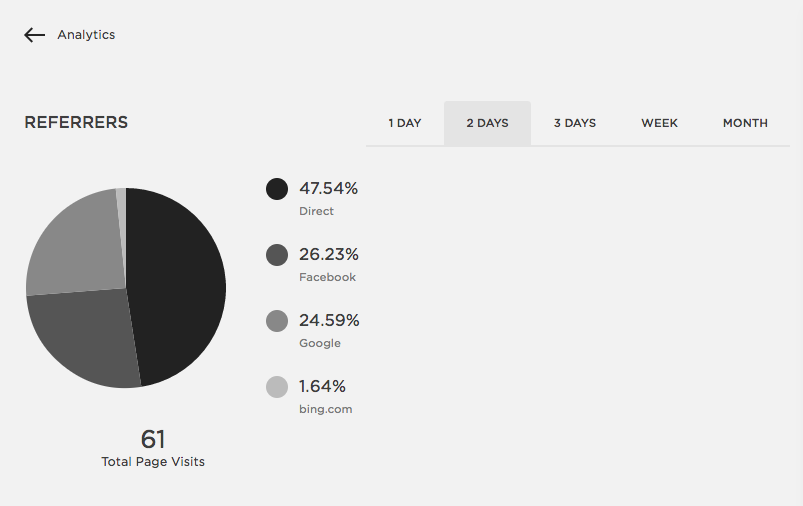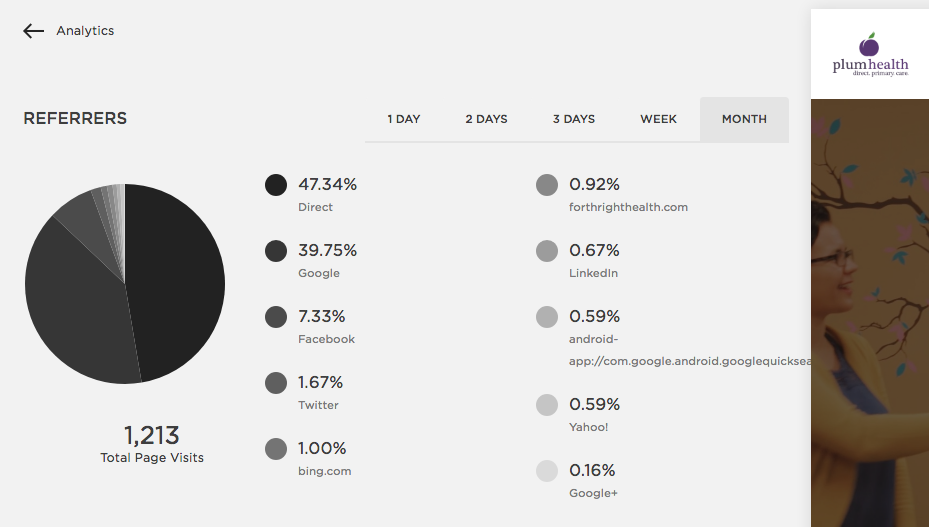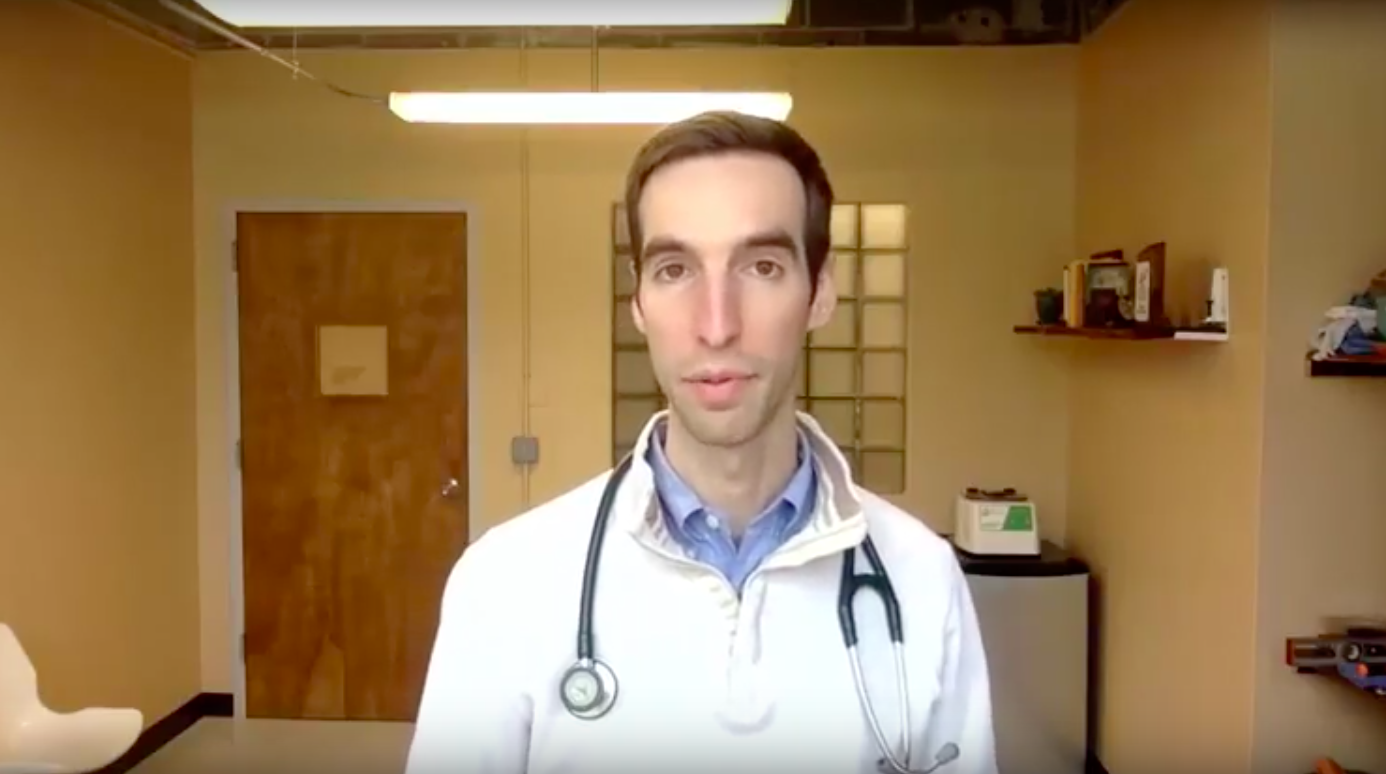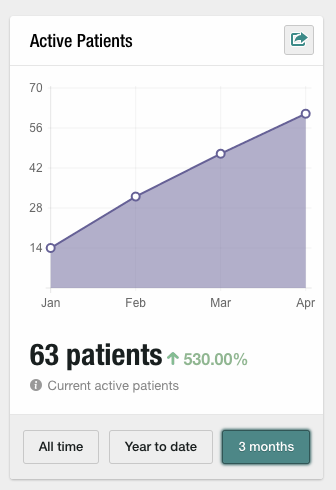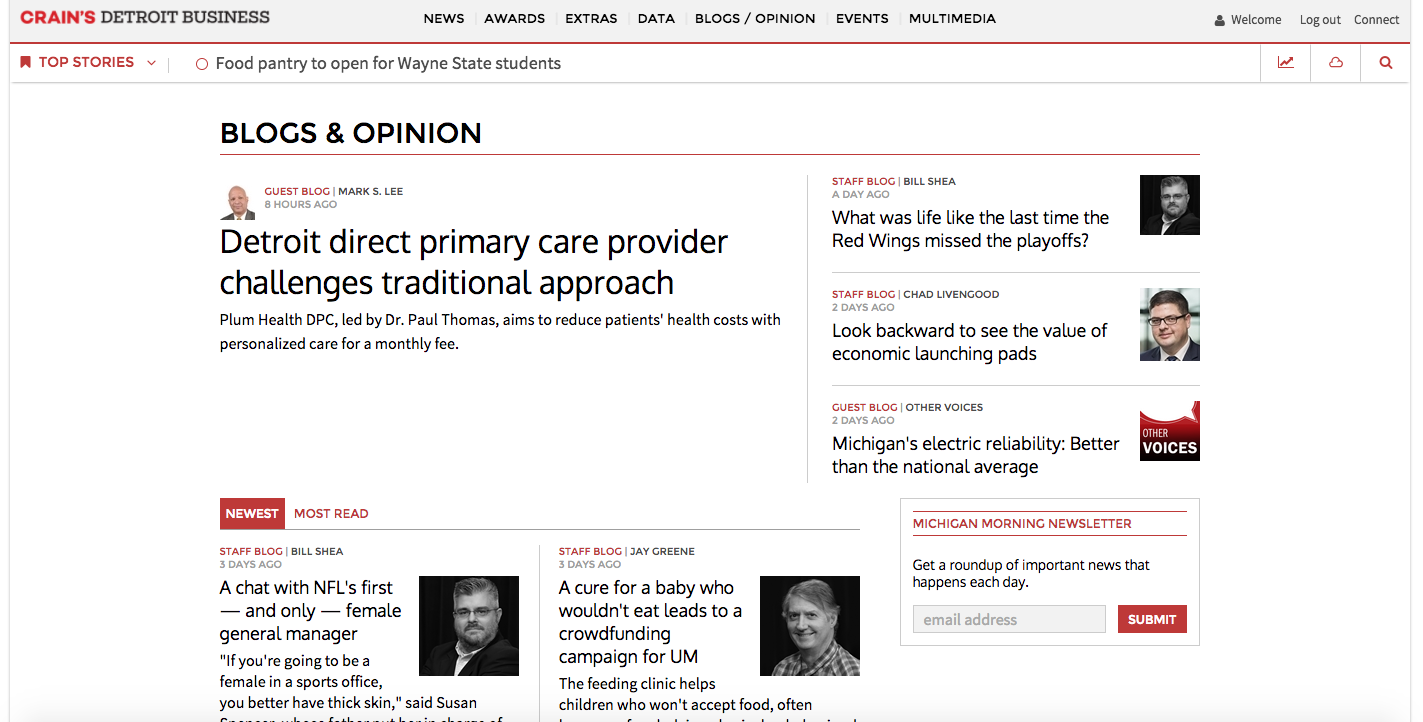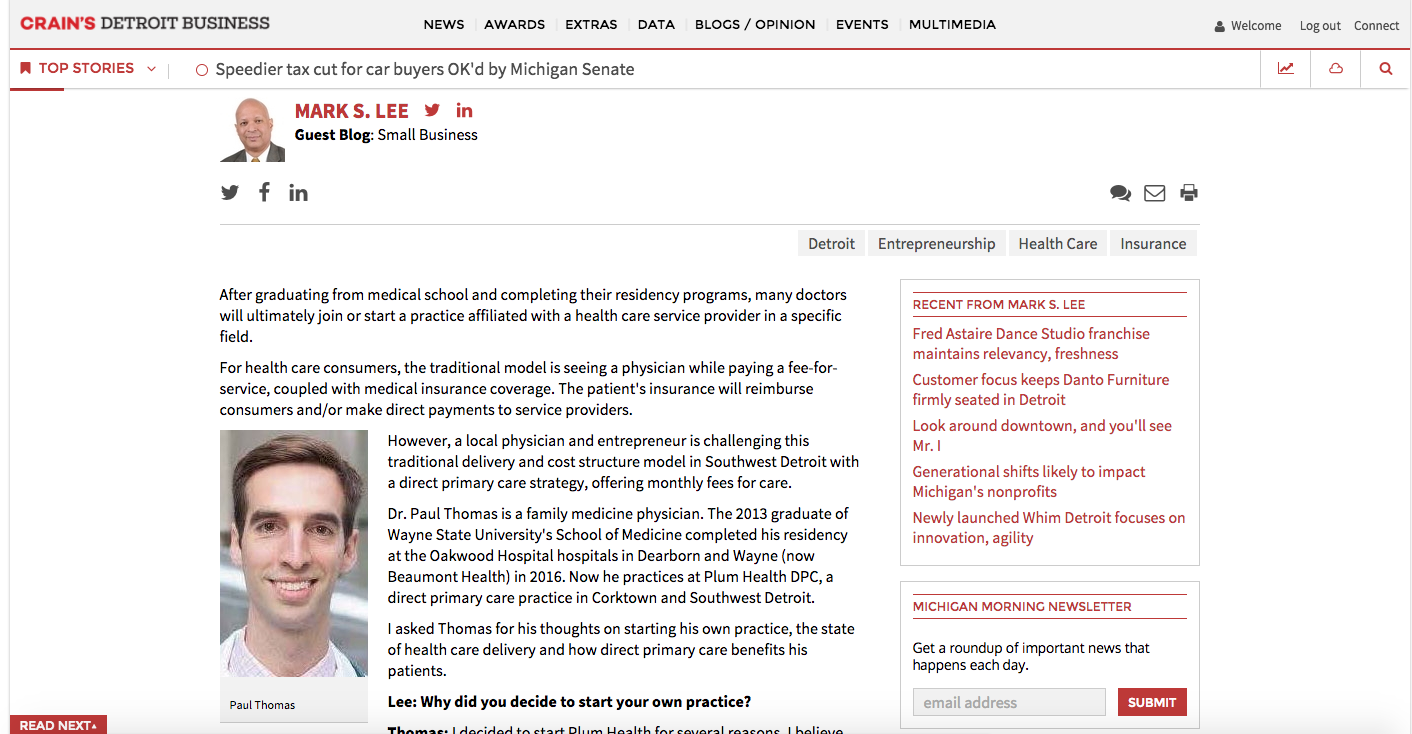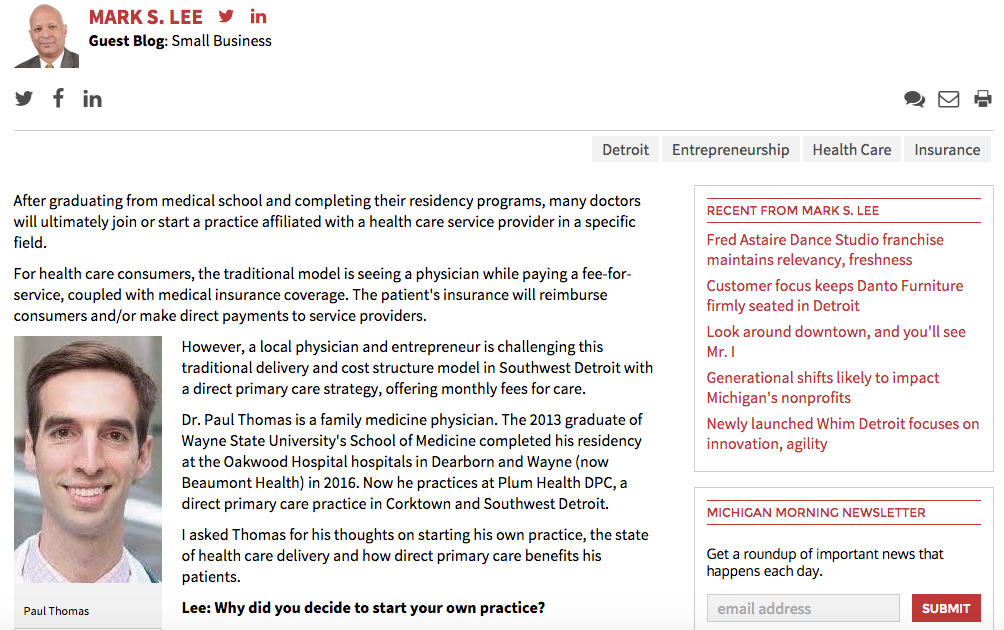Plum Health Blog
Motivation to Quit Smoking
We are all on a journey, and at Plum Health we like to guide people to better lifestyle choices. For example, if you're trying to quit smoking, we can help you by reminding you of your commitment.
How do we do this? It's really simple, actually. We just send you a text message! Here's a real life example, sent to one of our members last week:
These are real text messages, and this is a real patient. Their name has been removed for patient privacy sake, but you get the idea. When you're a part of Plum Health, you are someone who I think about and that I care about and that I want to help. Sincerely, whenever I think about this person, I send them a text and ask - "how's it going?"
And, there is a great deal of evidence to support these types of interventions. There is a systemic review/meta analysis on Text Messaging-Based Interventions for Smoking Cessation in the Journal of Medical Internet Research that came to this conclusion: "The current meta-analytic review provides unequivocal support for the efficacy of text messaging interventions for smoking abstinence."
That's why I send messages like this:
Further, texting patients about their health can have different applications. For example, a text message to a patient regarding their exercise patterns or medication adherence can help them to achieve their goals.
So, what's your goal? How do you want to become healthier? Can I help you get there?
Thanks for reading, and have a great day!
- Dr. Paul with Plum Health
A Golden Apple in My Office
This week, I was taking care of a family of 6 in my office! There was a lot of joyful movement and one of the toddlers grabbed an item from its resting place- it's an Apple, a Golden Apple, that I keep on my shelf and it's a reminder of my mission, vision, and values.
When I was in medical school at Wayne State University, I was awarded with the Golden Apple Student Award for having an understanding of the Art of Medicine as displayed by the care and understanding of patients. It was a tremendous honor, and it's something that I carry with me, as well as something that I want to give to my patients and reflect in my practice.
Often, my patients will ask me about the best course of action going forward, and sometimes the answer isn't always clear. You see, there's the science of medicine, the reproducible, empiric evidence with its best practices and treatment recommendations. These guidelines are important to know and important to follow in most cases. But, on the other side, is the Art of Medicine, and because every one is unique, an individual, with unique medical concerns, treatment choices aren't always clearly defined.
When difficult choices need to be made, I often ask my patients which course of action they'd like to pursue. This may be a unique aspect to my practice, but I know that it's important to engage in shared decision-making with the people that I care for. When decisions are made together, we can be on the same page about treatment, compliance to the plan is higher, and people feel like they have more control over the condition and situation.
Thanks so much for reading and have a wonderful day,
- Dr. Paul with Plum Health
Why It's Important to Have a Family Medicine Doctor in Detroit
Today I had the pleasure of speaking with Keith White of the Cancer Awareness Resource Network. We talked over the phone about his organization, the work we're doing with Plum Health, and the potential that we have to serve folks with cancer in Detroit and beyond.
Keith has had an amazing and inspiring journey. To read about him, check out what he wrote on his "about us"page. One thing Keith realized, though, is that even if folks have great health insurance, they may still have really high co-pays for doctor's visits and medications. He reached out to see what Plum Health could offer those with cancer and those in remission in his network.
Simply put, we can offer the best primary care experience in Detroit. What that means is that you have a Family Medicine Doctor or a Primary Care Doctor who is truly your advocate. I take my role seriously, and I will advocate for your health and wellbeing, your family and your finances while you confront cancer. How do we do this?
First, I focus on you and take a wholistic approach to your care. I have more time to spend with you, to get to know you and understand where you're coming from, what you're dealing with, and where you want to go with your life and your health. As your family doc, I will make sure that you're taking the right medications, that you are getting the right screening tests, and keeping up with treatment.
Second, I take care of folks in the context of their families and their communities. If there are emotional or familial stressors, we can talk about those and look for solutions together.
Third, I watch out for the financial wellbeing of my patients. This means that I make my prices clear and understandable, I don't charge co-pays for visits, and I give my members medications at wholesale prices.
Cancer and its treatment are hard enough, so when facing these difficulties, you want a primary care doctor who knows you well and who can advocate on your behalf.
Thanks for reading, and have a wonderful day,
Dr. Paul Thomas with Plum Health
The current look of our Plum Health Direct Primary Care office in Detroit, Michigan
Hatch Detroit 2017 Application
Today, we submitted our application for Hatch Detroit 2017. Our company is called Plum Health DPC and we deliver affordable, accessible healthcare services in Detroit. We offer street level, neighborhood-based medicine in a city with very few primary care medical resources. There are roughly 50 - 100 primary care doctors in a city of 683,000 people, or roughly 1 doctor for every 6,000 - 12,000 Detroit residents.
This lack of access to primary care has a net negative effect on the city. Medical problems go untreated, worsening the burden of disease in the city for all maladies from diabetes, to high blood pressure, and cancer. Residents who cannot get in to see Detroit-based doctors must drive to the suburbs for services, causing inconvenience and costing the city in terms of tax revenue.
The Hatch Detroit 2017 grant is an opportunity for $50,000 in cash, along with support services ranging from legal to accounting, and beyond. With this $50,000, we would be able to hire a second doctor as soon as possible. This has an immediate benefit for the community in that we can get another doctor in Detroit to provide holistic and comprehensive primary care services.
We believe that primary care services are invaluable for a community, especially in a City like Detroit. The type and amount of value that we give to the community will exceed the initial investment from this grant competition, should we be so fortunate as to be considered for the prize.
In effect, this $50,000 yields immediate impact. First, the Detroit community gets a desperately-needed primary care doctor in a street-level, community-facing medical practice. More screening tests are ordered, more colon, lung, prostate and breast cancer cases are caught early. More diabetic and hypertensive patients have their blood sugar and blood pressures controlled, resulting in lower heart attack and stroke rates in the years ahead.
I know it's not super sexy! But it is vital for a functioning city and truly revitalized neighborhoods. In keeping with the Mayor's vision of 20 minute neighborhoods, having a neighborhood family medicine doctor can only serve to strengthen Detroit's neighborhoods and the future of Detroit in general.
Thank you for reading and for watching,
Dr. Paul Thomas with Plum Health in Detroit, Michigan
Plum Health July Update
The last 3 weeks have been a whirlwind! About 3 weeks ago, we were featured on Channel 4 news in Detroit, aka WDIV. Within the week, we had roughly 2,000 unique page views, 100 phone calls, 200 emails, and 30 - 35 new sign ups for our service. It was an overwhelmingly positive response.
Our focus has been to take really good care of the new folks who signed up while maintaining our excellent standard of care for the people already signed up for our service. Our focus is on quality, not quantity.
Also, I attended the AAFP's Direct Primary Care Summit in Washington DC and met with some legislators and legislative assistants to discuss DPC and what we do at Plum Health in Detroit. This was a great trip and a great chance to talk with legislators about what we do at Plum Health and in the Direct Primary Care model, but also talk with our DPC colleagues.
Furthermore, we continue to save our members significant amounts of money on their medications, labs and imaging. We had a person sign up who was charged $100 for 10 tablets of valacyclovir (Valatrex). This medication is used to treat genital herpes. At our clinic, it costs about $2.35 for 10 tablets because it costs $0.23/pill.
Thanks for reading and have a great day,
Dr. Paul Thomas with Plum Health DPC in Detroit, Michigan
Plum Health featured in Good Life Detroit
This week, Plum Health DPC was featured on the blog Good Life Detroit. Jennifer is the creative spirit behind Good Life Detroit, and she did a fantastic job writing about our clinic and Direct Primary Care in general.
I really appreciated her perspective as a mother - she notes in the article that she has 5 children! - and that she paid $125 for a 20 minute doctor's visit for one of her children. Contrast that with our clinic, her child could have been seen for a full year for $120, with as many visits as needed included in that price.
This is how we make our primary care services valuable for the community that we serve. If you were not aware, Detroit is a large, low-income population. We recognize this as a fact, and have adjusted our pricing to be accommodating for the community that we serve.
Another great point that she brought up in the article is the frustration that people can experience when trying to reach their doctor! Sometimes reaching the doctor can be like pulling teeth. She puts it more eloquently, here:
"Another great benefit of Plum Health Direct Primary Care is patients have the opportunity to speak directly to Dr. Paul without the hassle of long wait times and call screenings. Instead of having to go through a series of steps just to talk to their doctor, patients can call, text, or email Dr. Paul directly. In some cases, some doctors require you to leave a message with the office staff for a callback.
"Most of the time the office staff member screen’s the doctor’s calls and you have to tell the staff member exactly what it is you need or what your question is. Then you wait for the doctor to call you back, which can be anywhere from the same day or one to two days later, all depending on the doctor’s schedule.
"Members of Plum Health have Dr. Paul’s cell phone number and email address. They can reach him anytime they need to ask a question in regards to their health."
There are several other great points that she makes throughout the article. I was really impressed at her depth and thoroughness. I also appreciate her helping to get the word out about affordable, accessible health care in #Detroit. We're trying to serve as many folks who need this type of care, and articles like these help us to reach communities outside of our circle of influence.
Thanks for reading and have a wonderful day,
Dr. Paul Thomas with Plum Health Direct Primary Care
Plum Health Direct Primary Care is in Detroit, Michigan. We practice old-fashioned family medicine, but we use technology to make ourselves more accessible to our patients when they need us! I love this graphic that Jennifer at Good Life Detroit created for us!
I also really liked this graphic that Good Life Detroit made about our pricing tiers at Plum Health DPC - really easy to read and understand!
Plum Health Advocating for Direct Primary Care in Washington DC
This week we're in Washington DC, advocating for affordable, accessible healthcare services on Capitol Hill. We're meeting with the offices of Senator Stabenow, Senator Peters, Congresswoman Lawrence, and Congressman Conyers. This is one of those moments where I feel like the mission that I'm on is bigger than the community that I live in and bigger than my city and my state. Access to affordable health care is a National concern and our representatives and their office personnel have given us open ears.
On Thursday morning, I boarded a plane to DC. That day, I met up with several of my Direct Primary Care colleagues at the DPC Summit 2017. We took a bus from our hotel in Crystal City to the Dirksen Building on Capitol Hill. We received instructions from our advisors about how to talk to our legislators: be authentic and tell your story.
Here's the video I shot in the Detroit Metro Airport prior to taking off:
After our briefing, I was able to meet up with legislative assistants from the offices of Senator Stabenow, Senator Peters, Congressman Conyers, and Congresswoman Lawrence. Here's a video I shot inside the atrium of the Hart Senate Office Building:
The Hart Senate Office Building houses the offices of Senator Peters and Senator Stabenow. I was bouncing between this building and the Rayburn House Office Building, where Congresswoman Lawrence and Congressman Conyers have their offices. Here's a video I shot just outside of the Rayburn House Office Building:
Thanks for reading and watching, and have a great day,
- Dr. Paul Thomas with Plum Health DPC in Detroit, Michigan
Local Detroit Doctor on Channel 4 News WDIV
This week, Plum Health Direct Primary Care was featured on Channel 4 News, station WDIV, in Detroit, Michigan. Plum Health was billed as a service that is saving people "thousands of dollars". While we are able to save folks money on their health care needs, the reason why we do this goes much deeper.
Our mission is to provide affordable, accessible health care in Detroit and beyond. We build relationships with our members and make ourselves available whenever our patients are in need. We make the prices for all of our services transparent so that you can understand both the cost and the value. Here's what WDIV wrote on their webpage:
DETROIT - Dr. Paul Thomas, who runs the Plum Health Clinic in Detroit, might just have a plan to revolutionize healthcare -- it's called Direct Care.
Thomas said everyone needs health insurance in case of catastrophic illness or injury, but he quickly added, "Basic healthcare outside a hospital is actually low cost."
When was the last time "low cost" and "healthcare" showed up in the same sentence?
A hospital test for cholesterol can cost $120; Thomas charges $6.50. A month's supply of Prilosec costs about $17 at the pharmacy, Thomas' clinic members pay 96 cents for the same prescription.
"The more money the insurance companies touch, the more that sticks to their hands," Thomas said.
Thomas argues that Direct Care removes the profit-takers between your dollars and your doctor, and makes affordable healthcare a reality.
I am deeply grateful for the coverage, and am deeply grateful to be a physician taking care of people's medical needs. Please let me know how I can be of service to you, and thank you for reading and watching.
- Dr. Paul Thomas with Plum Health Direct Primary Care
Primary Care Clinic in Detroit
When I was a first year medical student, I worked with a group of my fellow medical students to build an outdoor medical clinic. We wanted to raise awareness about the lack of primary care services in Detroit, and we accomplished this by constructing an outdoor medical clinic.
Currently, there are roughly 50 - 100 primary care doctors in the City of Detroit. This equates to about 1 primary care doctor for every 6,000 - 12,000 residents, which is horribly underserved. In the future, I would like to see 1 primary care doctor in every single Detroit Neighborhood, from East English Village to Ford/Wyoming, from Old Redford to Lafayette Park.
Having community primary care doctors creates a tremendous amount of value for the surrounding neighborhood - that doctor becomes a go-to person for folks who need health care and even emotional support.
However, the current reality in Detroit is that folks either don't have access to a primary care doctor or are driving to the suburbs for their care. To illustrate that lack of primary care services, our group of medical students built an outdoor clinic as a part of the Heidelberg Project on Detroit's East Side or what you may call the McDougall Hunt Neighborhood. Of course, we had the approval of Tyree Guyton, who checked in on our work that day, and we also received some press from the Detroit Free Press and the Wooster Collective out of NYC.
It was a simple clinic, with a reception desk, a door frame, a door, an exam table, and some chairs. On the door, we wrote all of the barriers to accessing health care services in Detroit and in the Nation. This was in 2009, when the debate over the Affordable Care Act was raging.
I visit the location periodically, to see how it has changed over the years. The last time I visited the site was in September 2016 during the Tour de Troit, an annual bicycling event that takes riders around the city. Someone had added a skeleton and some body parts, and it looks like Tyree made his signature drawings of faces on our plexiglass wall.
Plum Health may be in its infancy, but I know that we are already filling a need in the community in terms of primary care services. We recently surpassed 100 members and continue to grow, adding new members each week. We've taken care of newborns, toddlers, teens, and adults, and have addressed conditions ranging from sore throats to cancer.
As I continue to serve in the community, I hope to live up to the ideals that I put forth in this work of public art, to be the kind of community doctor that addresses the lack of access to health care in Detroit. I will also work to inspire the next generation of Family Physicians to take the leap into private practice in a community-based setting.
Thanks for reading, and have a wonderful day,
Dr. Paul Thomas with Plum Health DPC
How to Quit Smoking in Detroit
The adult smoking rate in Michigan is 20.5%. So, of the Michiganders over the age of 18, roughly 1 in 5 are smokers and that translates to 1,557,000 smokers in the State of Michigan. Among the United States, Michigan has the 9th highest smoking rate among adults.
This is unfortunate because there are many adverse effects of smoking, from increasing the risk of heart attacks and strokes to increases in the rates of head and neck cancers and lung cancers.
However, there are effective treatments that can help you quit smoking, and once you quit smoking many health benefits can be realized, from lowering your blood pressure to decreasing your risks of cancer.
This week, I've had a few people ask for help in terms of smoking cessation, and I am happy to provide that type of help. In fact helping people to quit smoking has some of the best patient-oriented evidence in medicine. Full stop.
Logistically, I would have you come in for an appointment. We would talk about where you are - pre-contemplation, contemplation, or ready to quit aka "quit mode". Then we'd review your medical history, current medications and any pertinent health-related issues. We would then formulate a treatment plan based on you as an individual.
In the person discussed in this video, we used Zyban or Wellbutrin or Bupropion (all different names for the same medication). This is effective in reducing the cravings that people feel for cigarettes. Then, we set a quit date. This is 1 week after starting the Zyban (bupropion).
After the quit date is reached, nicotine replacement therapy is used to tamp down hour-to-hour cravings. This can be in the form of a patch or gum or lozenges. Again, we personalize the method based on your preferences.
Let me know if you'd like to start your journey to better health with Plum Health, you know that you can reach me through our contact page or by phone, 313.444.5630.
Sincerely,
Dr. Paul Thomas with Plum Health DPC
Direct Primary Care Doctors Have More Time
Have you ever had this experience: a doctor tells you that you have condition "X" with treatment "Y", they then proceed to leave the room. A few moments later, the medical assistant hands you a pamphlet explaining condition "X" and treatment "Y", saying "thank you so much and have a great day"?
Questions start to pop in your head - do they know that I've already tried medication "Z"? What are the common side effects of treatment "Y"? Perhaps you've then asked the medical assistant, who then tries to pull the doctor out of the next patient's room.
This can be extremely frustrating, and for good reason. When you see the doctor, you want to have a plan. Further, you want to understand this plan, the side effects of treatment, the potential costs involved, and other options if this option fails.
Direct Primary Care doctors have more time to spend with their patients. We use this time to explain treatment plans, from why we chose a specific medication to what you should expect and when it's time to make that referral.
As an aside, I was discussing this with some of my Direct Primary Care doctor colleagues: should we be sending information to our patients via digestible video segments?
My answer is as follows:
Should Direct Primary Care Doctors make videos for their patients? In short, maybe. If you are consistently repeating information for your patients, it might be a good idea for you to make a short "explainer" video. For example, the difference between strep throat and a viral sore throat or a preferred diet method, or what to do in the case of a tick bite.
If you are seeing common ailments, it may make sense to make videos explaining the symptoms, but you became a Direct Primary Care Doctor for a reason! You wanted to have more time to discuss issues with your patients, more time to explain why you are using that medication or why you are pursuing that course of action.
It would make more sense to make videos for a larger health system. If the videos are really high quality, the doctors who have less time to explain themselves can use them to give patients the information that they would want to convey themselves, but don't have enough time to convey.
Thanks so much for reading, and have a great day,
Dr. Paul Thomas with Plum Health Direct Primary Care
WeWork Creator Awards Detroit Application
Today, we submitted our application for the WeWork Creator Awards! I really enjoy submitting applications for contests like this, because it helps me to clarify our mission, vision and values. And it's an opportunity to learn and grow through outside feedback about our internal operations.
In the application, they ask: "What problem is your idea, business, or organization solving?" For us at Plum Health, it's all about providing high-quality Family Medicine services in the community. It ain't sexy and it ain't super exciting, but it's so darn necessary! Having excelling primary care services in your neighborhood saves costs and improves health outcomes.
As they put it in this linked article, "One primary care doctor per 10,000 people in the U.S. can decrease hospital admissions by 5.5 percent, emergency room visits by 11 percent and surgeries by 7 percent."
This point is salient in Detroit, where there is an epic primary care shortage. Currently, there are only 50 - 100 primary care doctors in the City of Detroit for 680,000 people. That's 1 doctor for every 6,000 - 12,000 people. I recently wrote an article about this in the Detroit News.
Historically, this has been a difficult issue to solve because practice location for doctors is often tied to reimbursement from the community. Primary care doctors have avoided Detroit because more than half of Detroiters are on Medicaid, which generates low reimbursements.
With Plum Health, we do not rely on government or third party payers of reimbursement. Instead, we bill patients directly: $10/month for children and $49 for young adults, which covers all doctor's visits, texts, phone calls, and emails.
Additionally, members also have access to wholesale medications, at-cost lab work, and at-cost imaging services. From January - May 2017, we have saved our members roughly $15,000 on their meds, labs, and imaging. We are here to provide a tremendous amount of value to our patients and our community.
Our ask for the WeWork Creator Awards: help us reach our goal of providing value for the community by supporting what we do at Plum Health DPC!
The WeWork application continued with the following question: "How do you, your business, or your organization interact with the community?" Put simply - we are imbedded within the community and provide ours services to community members.
At Plum Health DPC, we take care of folks of all ages, races, ethnicities, and orientations. We are practicing on the street level, open and accessible to the community. Our youngest member is 14 months old, our oldest is 63 years; some of our members earn less than $30,000 and cannot otherwise afford health care. These folks are often shut out of the traditional insurance system because they cannot afford the premiums.
In addition to serving our paying customers in the community, I regularly volunteers at Cass Community Social Services' Clinic in Cass Corridor and the Student Run Free Clinic at I-94 and Conner. Here, I'm able to deliver free care to the most vulnerable members of the community - typically the homeless and uninsured.
Finally, Plum Health is regularly at health fairs throughout Detroit, performing free health screenings for non-profit organizations and church groups.
The last major questioned asked in the application was about how we would use the money if we won: "If you were awarded a grant, what new benchmarks would you be able to reach?" We are doing pretty well at Plum Health, adding new members each month and growing at a sustainable pace. However, if we won the Creator Award, we would be able to grow more quickly and therefore serve more people in Detroit and beyond.
Specifically, A grant of $18,000 - $36,000 would allow us to lease a larger office space and hire a second doctor. In a city with such limited primary care options, hiring a second doctor to work in the city would make a substantial difference in the lives of the people in our community.
We've taken care of folks who earn less than $30,000 and we've seen people who haven't been to a doctor in years, living in fear of generating large medical bills, and living with the consequences of their worsening high blood pressure and diabetes. Without the grant, the goal of leasing a larger office space and hiring a doctor would be at 6 - 12 months. With the grant, these goals would be achieved in 3 - 6 months.
Thanks so much for reading more about what we do at Plum Health DPC, and if you're a member of the WeWork community, thanks for taking the time to read our application and this blog post!
Sincerely,
- Dr. Paul with Plum Health DPC.
Travel Medicine in Detroit
It's that time of year where people start traveling! If you have travel plans for this summer or fall, let us help you at Plum Health DPC. We have helped several of our members get their vaccines at-cost, we deliver the vaccines in our office, and we save our traveling patients time and money.
We give our vaccines at-cost to save you money on your trip, from Hepatitis A, to Typhoid, to TdaP, and Malaria prophylaxis, we've got you covered for your upcoming travel. Here are our prices:
- Hepatitis A vaccine $68.40
- Typhoid Vaccine: $72
- Tetanus Diphtheria and acellular pertussis (TDaP): $47.47
- Malarone for malaria prophylaxis: $3.16/pill, or roughly $50 for an 8 day trip
There aren't many travel medicine options in the City of Detroit, and we are happy to be filling a gap in coverage and a gap in care for the folks that are taking trips outside of the country. You may not need all of the above listed vaccines, but we will work together to figure out which are necessary for your trip. The CDC.gov website has a great tool for learning which vaccines you need.
Thanks for your time, and happy travels,
- Dr. Paul Thomas with Plum Health DPC
Common Criticisms of Direct Primary Care
In this blog post, I'm going to list some common criticisms to Direct Primary Care and my responses to these criticisms.
In a traditional family medicine practice, each doctor typically sees a panel of 2,500 patients. If each patient comes in twice each year, that means roughly 100 visits each week, assuming that the doctor works 50 weeks each year, or roughly 20 visits each day. In Direct Primary Care, doctors reduce their clinic panel to 500 patients. Now, if each patient visits twice each year, the doctor will see 20 patients each week, or 4 patients each day. If each patient visits three times each ear, the doctor will see 30 patients each week, or 6 patients each day. This allows the doctor to spend up to an hour with each patient and use the remaining time in their schedule to answer phone calls, texts, and emails as well as handle the administrative duties that go along with running a Direct Primary Care practice.
The biggest criticism of doctors who switch from a traditional or fee-for-service practice to Direct Primary Care is this notion of patient abandonment. This means that if the doctor cuts down their practice from 2,500 patients to 500 patients, there will be 2,000 patients that are "abandoned" or without primary care services.
My response to this is simple: I will no longer perpetuate a bad system. In the current fee-for-service system, patients do not have enough time with their doctor for a thorough evaluation, for all of their questions to be answered, and to feel truly cared for. In the current fee-for-service system, doctors are rushing from room to room to room and are unable to provide the kind of high-quality care that their patients deserve,
In the current system, primary care doctors are marginalized and devalued, predisposed to burn out and leaning towards early retirement. Younger medical students see their burnt-out, grumbling, and overstretched attending doctors in Family Medicine and choose not to become primary care doctors in the first place. Why earn less than other specialties in a field that is less-than fulfilling?
Direct Primary Care doctors are fighting to make primary care relevant again, to restore the doctor-patient relationship, and to create value for patients in a way that the current fee-for-service system cannot.
There's an old adage: "take care of yourself so you can care for others", and it's something that primary care doctors have forgotten about. The expectation of the system is that we should work hard, keep our heads down, and not question the health care administrators who send an overwhelming volume of patients into our clinics each day.
But when we begin to sacrifice the quality of our work simply because we don't have enough time, it's time to take a stand and re-think our practices.
This brings me to the next criticism: how many conditions can a primary care doctor really treat? aka how much coverage can a family medicine doctor really provide?
When a well-trained family medicine doctor is able to practice at the top of their training, they are able to manage between 80 and 90% of all patient concerns. From sore throats, to blood pressure management, Pap tests, skin biopsies, abscess drainage, diabetic management, and beyond, family medicine doctors are able to care for a broad and diverse range of conditions.
The secret sauce in Direct Primary Care is the amount of time we are able to spend with our patients. If I have an hour, I can use it to drain an abscess, to talk about the efficacy of your antidepressants, to draw your blood for the lab work you need, to remove that ingrown toenail, to fully evaluate your vertigo, to evaluate your child's Vanderbilt scores for ADHD, to dispense the necessary medications and more.
In the current fee-for-service system, the expectation is that primary care doctors perform a cursory evaluation and then make a referral to a specialist. In the Direct Primary Care model, primary care doctors have more time to address concerns to the fullest of their training. And if that specialty referral is necessary, Direct Primary Care doctors have enough time to personally manage the transition of care, to make the follow up phone call and to get a full picture of what happened during that referral.
To summarize, Direct Primary Care doctors who leave the traditional fee-for-service system are not abandoning their patients. Rather, they are now free to practice medicine to the best of their ability by having enough time to give high-quality, thoughtful, and comprehensive primary care services to their patients. This will allow burnt out doctors to stay in practice for a longer period of time and it may inspire the next generation of medical students to choose primary care.
Thanks for reading, and have a wonderful day,
- Dr. Paul Thomas with Plum Health Direct Primary Care
Direct Primary Care in New Center
Today, Plum Health Direct Primary Care will be up in New Center at TechTown Detroit. This will be a part of "The Shop" at TechTown, where local entrepreneurs are featured on a rotating basis.
This month's theme is health-related businesses, so we are excited to participate! If you don't know about Plum Health DPC, we deliver affordable accessible healthcare services in Detroit and beyond. This is a great time to learn more about the service and have your questions answered.
If you don't know about TechTown, it is a small business ecosystem that doesn't focus on tech-only, as the name may imply. It is billed as "the most established business accelerator in Detroit. Its work supports industry verticals that are specific to the region's inherent assets".
Additionally, this is where I took the Retail Boot Camp course, which helped prepare me to start and run my business.
Thanks for reading and watching,
- Dr. Paul Thomas with Plum Health Direct Primary Care
Facebook Marketing for Doctors
Hello Doctor Colleagues! As I've started a new medical practice in the last year, I've had to become very familiar with several marketing channels. In this blog post, I will outline how to approach Facebook Marketing and how you can measure the results of your efforts for paid and unpaid posts.
Basics:
Set up a Facebook page for your business. This will allow you to use paid advertising via the Facebook platform, which is one of the most valuable and effective marketing channels available. You should not market your practice from your personal page only, because the number of people who can "friend" you is typically capped at 5,000, whereas your business page can receive unlimited followers. Also, you cannot pay to boost content or purchase ad space on Facebook via your personal account.
Create Engaging Content:
If you want to attract new members to your practice, create unique, interesting and engaging content. In simple terms, the most effective content consists of video, photos, sharing articles related to your practice or practice philosophy, and short lines of text. You want to create the kind of content that is "shareable", where your Facebook page followers will want to "share" this content with their friends and family. Educational material about hot topics in health and healthcare are especially "shareable".
An Example:
Recently, I wrote a blog post and made a video about bike lanes in Detroit. Accessible healthcare is something that I'm passionate about, and if I can further the progress that we've made in Detroit in terms of human-centered urban planning and Complete Streets, that would be ideal! Anytime we improve our walking, biking, and transit infrastructure, we provide more people with access to parks, grocery stores and doctors - all things that people need to be healthy.
As you can tell, I care a lot about this subject! So, pick a topic that you're passionate about and try to start a conversation with your community. Maybe for you it's vaccines, seasonal allergies, antibiotic overuse, the opioid epidemic, etc... These are all great topics that you can write about and share with your Facebook followers.
Once I posted my video into Facebook regarding bike lanes in Detroit, I opted to boost the post. You can boost a post on Facebook by linking your business bank account to your business Facebook profile. You can boost your content for a few dollars on up to thousands of dollars.
As I've started to understand Facebook, it's algorithm, my followers, and my community better, my skill with boosting content has improved. It may take a few months and several boosts for you to understand what works for you, so start small with $10, $20, or $30 boosts and see what does well. As your comfort level grows, add more money to get better results.
In this video, I show my Business Facebook Page, and demonstrate how to boost a post, choose a location, choose an age range for my audience, and choose interests that my potential customers may have. You can also set the duration that you want the advertisement to run, and in this instance I select for a 24 hour period. View it here:
From there, I keep tabs on the boost by answering any questions and responding to any comments from my audience. After the 24 hour period has expired, I look at my results. These results can be "soft results": likes, shares, video views, audience members reached, etc... But, as we are operating businesses, these soft results are not as important as patient sign-ups. I discuss the "soft results" in this follow up video:
Additionally, the results of your Facebook boost can be measured by seeing how many people went to your website. I use Squarespace, which shows some "analytics" or data related to web traffic. Below, you can see our web traffic over the last 1 month. That spike on March 20th and March 21st came after we were featured on Local 4 WDIV in Detroit. The most recent spike on April 12th is a result of our recent Facebook post and boost, which linked directly to our Plum Health website. Our traffic typically hovers around 20 - 30 unique visitors and after the boost, we received 54 unique visitors.
Furthermore, in Squarespace's Analytics tab, you can see where your web traffic came from. These traffic sources are called "Referrers", places like direct browser traffic, Google searches, Facebook, Twitter, etc... Over the last 1 month, 47% of our traffic has come directly to our website, or people typing "PlumHealthDPC.com" into their browser. 39% of our traffic has come from Google, or people searching for "Plum Health" or "Direct Primary Care in Detroit" or something similar.
Importantly, over the last 48 hours or the time frame of our most recent boosted post, 26.23% of our traffic came from Facebook or about 14 unique visitors followed us from Facebook to our website. This spike in traffic from Facebook outpaced Google traffic. This is demonstrated in the photos below:
Finally, if you received any calls or direct messages in the 24 - 48 hour period after your post, you can ask your potential customer how they heard about your service. If they respond that they saw your ad on Facebook, then your sales funnel is working to your advantage. As a side note, it is always important to ask your patients or customers where or how they heard about you - that way you can focus your marketing efforts into that area.
For Plum Health and for this post, we received one inquiry during the advertisement and one inquiry in the 24 hour period after the advertisement ended. We were able to schedule both of those inquiries for appointments in the coming week.
Thanks for reading, and if you have any questions, leave them in the comments section below!
- Dr. Paul with Plum Health DPC
One last thing, if you’re a Primary Care Doctor or Allied Health Professional that is looking to Start and Grow a Direct Primary Care practice, check out our sister site www.StartUpDPC.com. You’ll find more information and in-depth courses on building the Direct Primary Care practice of your dreams.
Direct Primary Care versus Concierge Medicine
The phrases Direct Primary Care and Concierge Medicine are sometimes used interchangeably, but they are distinct entities.
The Concierge Medicine movement began around the year 2000 with doctors charging an access fee for their services while still billing insurance companies. The average membership cost for Concierge Medicine is roughly $2,000/year and up to $15,000/year.
Contrast that with Direct Primary Care or DPC. The DPC movement began around 2010 with doctors like Garrison Bliss in Seattle and Josh Umbehr in Wichita among others. Memberships cost roughly $10 - $100/month. There is an emphasis in DPC on a monthly membership structure - members are not locked in for a 1 year commitment.
In Concierge Medicine, the membership costs allows for access. Because the membership cost is relatively high, these types of practices attract the top 1% - 5% income earners. These high income earners are relatively price insensitive, so they are not as concerned about saving money on medications, labs or imaging. These patients are willing to pay for these ancillary services via their insurance even though the price may be inflated.
In Direct Primary Care, the membership includes more services. DPC doctors typically don't charge per visit fees and they try to move away from fee-for-service type transactions. Many ancillary services are included in DPC memberships, like EKGs, Spirometry, Wart Removal, etc... In addition, DPC docs get their patients wholesale medications, at-cost labs, and at-cost imaging services.
Concierge Medicine clinics attract members via programs like "Executive Physicals" or "Executive Health". These are tailored to high-income earners like people in the "C-Suite", aka CEOs, COOs, an CFOs.
Direct Primary Care doctors focus on health maintenance, wellness, and the bread and butter primary care services like preventive health, screening tests, chronic disease management, and acute care needs.
Concierge Medicine practices often mandate that you carry a high-end insurance policy - these practices often bill their patients' insurance companies for routine visits or services.
Direct Primary Care doctors do not bill insurance companies for the services they provide. That means that DPC doctors can take care of patients across a wide spectrum of coverage. For example, if you are uninsured, underinsured, or fully insured, you can be seen at Plum Health DPC. This is true for most DPC clinics.
I put together a short video to emphasize some of these differences. The audio got a little out of sync near the end, so I'm sorry about that! I'll try to re-shoot it later this week!
- Dr. Paul with Plum Health
One last thing, if you’re a Primary Care Doctor or Allied Health Professional that is looking to Start and Grow a Direct Primary Care practice, check out our sister site www.StartUpDPC.com. You’ll find more information and in-depth courses on building the Direct Primary Care practice of your dreams.
How to Start A Direct Primary Care Clinic Right Out of Residency
This week, I received a question from one of my followers on YouTube! Big shout out to everyone who follows/watches - I appreciate you!
Anyways, the question is this: do you recommend starting a Direct Primary Care practice right out of Residency Training? And yes, I do! There are several ways to go about this, but it is better to start right out of residency than to wait until you have established fee-for-service patients or established insurance-based contracts.
Probably the best way to do this is to work for the first 6 months out of residence in an infusion center, urgent care, or hospital setting. Take one of these "moonlighting" jobs, work 40 - 60 hours a week, and spend the remaining 20 hours in your work week setting up your Direct Primary Care practice.
So, how do you set up a Direct primary care practice?
First, start with why. For more on this, read Simon Sinek's book of the same name. In short, you want to create a business that reflects your "why", or why are you doing this? For me, I wanted to create a healthy resource for the community that was affordable and accessible for all people. The name "Plum Health" reflects that mission. Plums are affordable and available to the community. You can buy them at nearby Eastern Market or from your local grocery store. They are also purple, representing inclusion, and health giving.
Then, develop a brand and a website. You want to create a sleek, modern website with an easy-to-pronounce name. "Plum Health DPC" works for me for the following reasons: Plums are healthy, kind of like "an apple a day keeps the doctor away". Plums can be drawn by making two overlapping circles, for me symbolic of the doctor-patient relationship, which has greater overlap in my practice. Also, Plum Health DPC indicates that we're a Direct Primary Care practice - it says so in our name! Finally, the domain "PlumHealthDPC.com" was available, which is a must!
Try to avoid stuff like "Salubrious Health" or some similar SAT vocabulary word. Also avoid overly long names. Keep it simple! Other alternatives that would have worked well for me would have been "Plum Primary Care" or "Plum Family Medicine". If you live in a small town or are in a distinct neighborhood, you can highlight that neighborhood or town in your name. I am in the Corktown/Southwest Detroit neighborhood currently, so something like "Corktown Primary Care" or "Corktown Family Medicine" would have been reasonable, with a domain name like "CorktownPC.com", "CorktownFM.com" or "CorktownMD.com". But, choosing the name is contingent on the availability of the domain.
The only downfall to naming your brand after a specific location is that if you decide to expand and open a second location, your brand will be incongruous with that second location. For me, I know that I wanted to be in Detroit to start and the goal is to expand regionally, so choosing a name that was not location-specific was important to me.
Your website is super important because it becomes a beta test for your market. If you are getting good traffic, engagement and responses from the community, these are positive signs. If not, it's not the end of the world, you may just have to be more proactive with your marketing efforts.
Beyond Naming, branding, and websites
Beyond naming and branding, form an LLC, PLLC, or S-Corp. Consult with a lawyer on which is best for you. Perhaps hire that lawyer or set up a retainer agreement so that you can consult that lawyer as your business grows. Then, set up a business bank account. Link that business bank account to software like QuickBooks so that your expenses are tracked.
Everything that you spend on the practice stays within the practice, meaning that you should treat your business as a separate entity from your personal finances. You may infuse your business with your own capital and that's why working 40 - 60 hours/week makes sense for 6 months. This way you can make enough money to fund your DPC start-up.
Alternatively, you can get a business or medical practice loan from a bank like Wells Fargo or Bank of America. Next, you need to have someone review your expenditures, so hiring an accountant or having a retainer agreement with an accountant is a must.
Choosing an Electronic medical record
Then, you should choose an Electronic Medical Record (EMR). Personally, I use ATLAS MD EMR because the platform is made by DPC doctors for DPC doctors. Also, ATLAS has a billing platform integrated into the EMR, which makes your life and your practice easier to manage. You can link your ATLAS MD account to your website and have people sign up directly on your site - these are called pre-enrollments. You can do this on a trial basis with ATLAS, and once you hit your start date, all those "pre-enrollments" will become paying customers when you hit "start" on the EMR side. At that point, your customers will start paying you for services and you will start paying ATLAS for the platform.
Other contracts
During this time, you should also be setting up contracts with your service providers. Internet, copy/fax machine, lab services, medication wholesaler, medical supplier, medical waste, shredding, general waste, etc... You should also be looking around for real estate options. A good way to test your model is to sublease from an existing doctor's office. Maybe you can find a general surgeon and you could sublease a few unused exam rooms - one to see patients and one to store meds, supplies, etc... If you are successful in that sublease location, you can look at expanding your business and setting up your own lease.
Benefits to subleasing are numerous. You won't have to set up your own internet provider, copy machine, medical waste, shredding, and general waste contracts - they will likely be included in your lease agreement depending on what you negotiate for.
Final thoughts
Setting up a Direct Primary Care practice is not easy, but it can be done successfully if you take measured risks as you grow. The website is your first test. For me, I started making house calls as a second test. As a third test, I subleased a one-room office from a local school. The next test for me will be to lease out my own office/building, and I'm just about at that point!
Also in this vlog, I touch on Public Service Loan Forgiveness programs and the effect it may have on primary care doctors choosing Direct Primary Care practices. More on NPR's website.
-Dr. Paul Thomas with Plum Health DPC
One last thing, if you’re a Primary Care Doctor or Allied Health Professional that is looking to Start and Grow a Direct Primary Care practice, check out our sister site www.StartUpDPC.com. You’ll find more information and in-depth courses on building the Direct Primary Care practice of your dreams.
Thanks for reading and watching, and have a wonderful day!
- Dr. Paul with Plum Health DPC
Steady Growth in the First Quarter of 2017
Plum Health DPC is a Direct Primary Care practice in Detroit, Michigan. It is the only authentic Direct Primary Care practice in Detroit and Wayne County, and one of two authentic DPC practices in the State of Michigan.
When I started chasing the dream of Direct Primary Care in early/mid 2016, I wondered if this would be possible and/or sustainable. Could I really hope to spend an hour with each of my patients? Could I really operate a medical practice outside of the insurance-based system? Could I really be successful?
When I started making house calls in November and December, I experienced slow growth. I added only 10 people in those first two months. Part of the issue, in my mind, is that it's hard to visualize what I'm trying to accomplish. Unlimited visits? Wholesale medications? At-cost labs? It all seemed amorphous to those listening to my pitch.
Once I leased an office space (December 15th, 2016), the "idea" became more real for the people interested in signing up. Once inside the Plum Health DPC office, you can see the medications, the blood draw equipment, the scale, the otoscope/ophthalmoscope set, and the other accoutrements that make a doctor's office feel like a doctor's office.
Since that time and over the course of the last 3 months, we've experienced steady growth. My goal was to add about 20 new members each month, with a minimum of 15 and a maximum of 30 new members each month.
So far, we are on pace, meeting those targets each month. As our membership base has grown, I've noticed more of a "snowball" effect, where current members are beginning to refer friends and family to the practice! This has helped us remain sustainable.
Further, only 2 members have cancelled over the period of 5 months! Both instances were similar - young 20-somethings who signed up because they needed some help with an immediate issue. After a few months of membership, they were able to garner health insurance through an employer or another source, and couldn't justify both expenses because of a limited budget.
Finally, I am so grateful to the people who have given this Direct Primary Care practice model a shot - a huge thank you to our current patients/members who sustain the practice, leave us positive reviews, and spread the word to their family/friends/co-workers!
Sincerely,
- Dr. Paul with Plum Health
Plum Health Featured in Crain's Detroit
This week, Plum Health DPC was featured in Crain's Detroit Business. The opportunity came up after meeting with Mark S. Lee on his program, Small Talk with Mark S. Lee. During the on-air interview, we only had 15 minutes to talk about Plum Health and Direct Primary Care. It simply was not enough time to get down into the nuances of what Direct Primary Care is, the mission of Plum Health, and the future of health care and health care policy in this country.
This follow up interview in Crain's Detroit allowed for a deeper dive into these nuances, and so I must thank Mark S. Lee and the Crain's Detroit editorial team for working with me and publishing this important piece. You can read the full article here.
I truly believe that Direct Primary Care will play a greater role in our health care ecosystem as people/health care consumers wake up to the actual cost of their medical care. By making health care prices transparent at Plum Health DPC, we allow people to use free market principles to purchase the health care that they need.
Thanks so much for reading, thanks again to Mark and Crain's Detroit, and thank you the readers, followers, patients, and supporters that make Plum Health DPC possible!
- Dr. Paul with Plum Health



